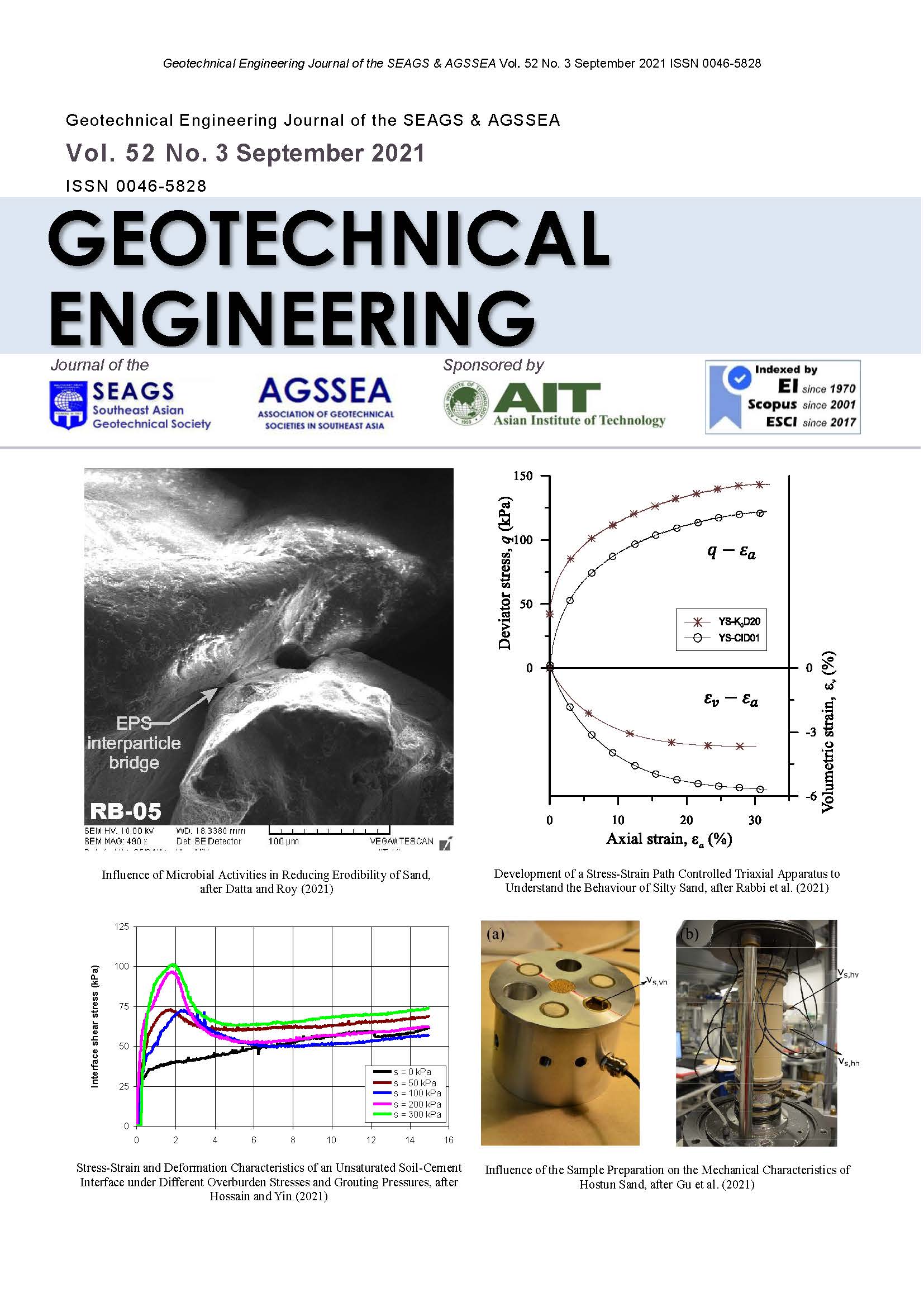Estimating Hydraulic Conductivity Assisted with Numerical Analysis for Unsaturated Soil – A Case Study
Main Article Content
Abstract
Meteorologically induced pore water pressure changes and associated changes in effective stress often affect the behaviour of geotechnical structures such as slopes. Seasonal fluctuations in pore water pressure can lead to stiffness degradation which is also known to have caused a number of failures across the world. These effects are likely to become more severe in the future as dryer summers and wetter winters are expected to become more frequent climate scenario in many parts of the world. To analyse the behaviour of a slope subjected to atmospheric boundary interactions, a number of parameter may be used including the soil water characteristics curve, saturated and/or unsaturated hydraulic conductivity of soil, and strength parameters. Some of them (e.g., hydraulic conductivity) are very difficult to deduce with high degree of certainty because of natural variability of soils and limitations in testing procedure. This paper outlines how numerical techniques combined with conventional field or laboratory investigation can serve as a useful technique to overcome some of these limitations specially in deducing hydraulic conductivity. The effectiveness of these techniques will be tested using a well-documented case study form the United Kingdom.
Article Details

This work is licensed under a Creative Commons Attribution-NonCommercial-NoDerivatives 4.0 International License.
Copyright © 2019 Association of Geotechnical Societies in Southeast Asia (AGSSEA) - Southeast Asian Geotechnical Society (SEAGS).


